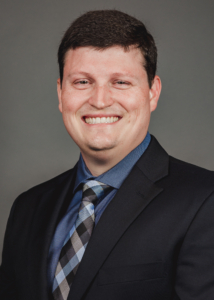Rheumatoid Arthritis: What Do I Need To Know?

September is Rheumatic Disease Awareness Month, which is about drawing attention to diseases that affect the body’s joints and muscles. Out of the hundreds of conditions that fall under that umbrella, rheumatoid arthritis is one of the most common. While over 1.3 million Americans have this disorder, many people are still unaware of the symptoms, signs and risk factors. So here’s a run-down of the disease so you can be fully equipped in understanding and identifying the indicators of rheumatoid arthritis.
What is Rheumatoid Arthritis?
Rheumatoid arthritis is a chronic inflammatory disease that mainly affects your joints. It begins when your immune system starts attacking your own body’s tissue. This results in inflammation of the lining of your joints, leading to painful swelling. The inflammation can also lead to bone erosion, joint deformity, and damage to other parts of your body, including your skin, eyes, lungs, heart and blood vessels.
Symptoms

The most common symptoms of rheumatoid arthritis are tender and swollen joints, joint stiffness, fatigue, fever, and loss of appetite. These symptoms also tend to worsen in the morning and after periods of inactivity. Early rheumatoid arthritis usually affects smaller joints first, including the joints in your hands and feet. The longer you have the disease, the symptoms will often spread to other parts of the body, such as the wrists, elbows, shoulders, ankles, knees and hips. These symptoms will also vary in intensity and severity.
Risk Factors
While it’s unknown what starts the rheumatoid arthritis process, there are risk factors that increase your risk of developing the disorder.
Gender: Women are more likely to develop rheumatoid arthritis than men.
Age: Middle-aged people (age 40 to 60) have a higher chance of developing the disease than any other age group.
Family History: People may have an increased risk if someone in their family has been diagnosed with rheumatoid arthritis.
Smoking: Smoking increases the chances of having the disease and is also connected to having more severe symptoms.
Weight: Patients who are overweight have a higher risk of developing rheumatoid arthritis.
Treatment
“There is no cure for rheumatoid arthritis, but there are effective treatments that can control the disease,” explains Dr. Daniel Grant, a rheumatologist at Harbin Clinic Rheumatology Rome. “The number, intensity, and severity of symptoms will determine the treatment plan your physician will choose for you.” Medication, physical or occupational therapy, and surgery are all options for rheumatoid arthritis treatment.
There are a few home remedies to help relieve some of your symptoms. Light, regular exercise can help strengthen the muscles around your joints, but it’s not recommended to exercise tender, painful, or inflamed joints. You can apply heat to tense or tight muscles to ease pain, or apply cold to reduce swelling and dull aches.
At Harbin Clinic Rheumatology, our providers specialize in diagnosing and treating arthritis, inflammatory muscle diseases, vasculitis, systemic autoimmune diseases, and metabolic bone diseases. Our board-certified rheumatologists work closely with patients, their families, primary care physicians, and other specialists to ensure that patients obtain appropriate and high-quality care. Make an appointment with your primary care doctor to discuss seeing a rheumatologist. Or learn more about rheumatology by visiting Harbin Clinic Rheumatology.

